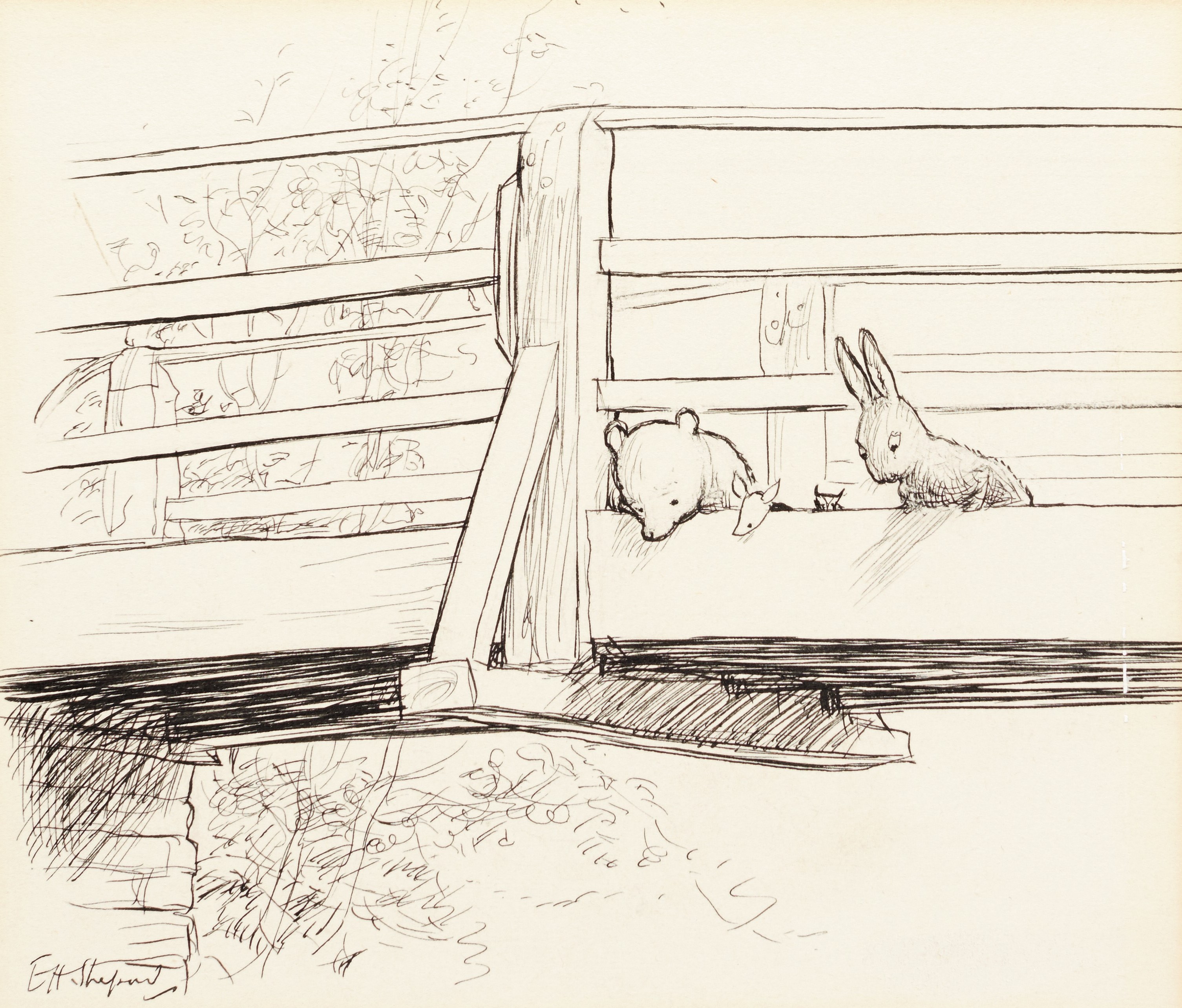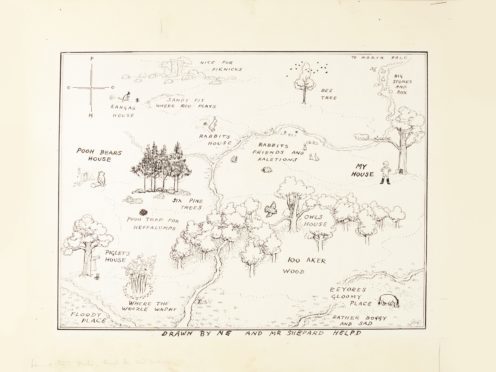The original map of Winnie-The-Pooh’s Hundred Acre Wood – “probably the most famous map in English literature” – is expected to sell for up to £150,000 at auction.
EH Shepard’s original 1926 sketch, unseen for nearly half a century, introduced readers to the world of Christopher Robin and his woodland friends in the original book.
The map also played a starring role in the Disney film, Winnie-The-Pooh And The Honey Tree, where it was animated as part of the movie’s opening sequence.

As well as capturing the book’s woodland world, it also features AA Milne’s much-loved characters including Eeyore, Winnie-The-Pooh and Christopher Robin.
Littered with misspelt locations, such as “nice for picnicks” and “100 aker wood”, the illustration is signed off with the words “Drawn by me and Mr Shepard helpd”.
It was first sold by Sotheby’s in 1968, where it sold for £650, before the auction house sold it again to a private collector two years later for £1,700.
It comes amid an increased interest in illustrations from collectors, particularly Shepard’s work, according to Sotheby’s senior specialist in printed books and manuscripts, Dr Philip Errington.

In 2014 an original ink drawing portraying the characters playing poohsticks sold for £314,500 – the record for any book illustration sold at auction.
Dr Errington said Shepard’s work was unique in that it had always been present in Pooh books.
“They’ve never been brought out in the UK or the US with illustrations by anyone else apart from EH Shepard and that is the power, and ability of the illustrator, and why this is probably the most famous map in English literature,” he told the Press Association.
The map will be sold by Sotheby’s alongside four other EH Shepard works – none of which have been seen for almost five decades.
One sketch – from the emotional conclusion to The House At Pooh Corner – features Christopher Robin and Pooh walking hand-in-hand to say their final goodbye.
Two additional illustrations are taken from chapter six of the same book, which show Pooh, Piglet, Roo and Rabbit playing poohsticks, and Eeyore floating in the water beneath the bridge.
The five original illustrations will be offered in Sotheby’s English Literature, History, Science, Children’s Books and Illustrations sale in London on July 10 with a combined estimation of £310,000-440,000.
Dr Errington said the increase in interest of illustrations shows the art market is becoming “far more inclusive”.
“We are getting a lot more interest in this material from collectors of art,” he said.
“Twenty years ago I would have said the interest in book illustration was from people who collected book illustrations… but now we have interest from people who collect art and there’s no reason why a book illustrator shouldn’t be considered an artist.”
